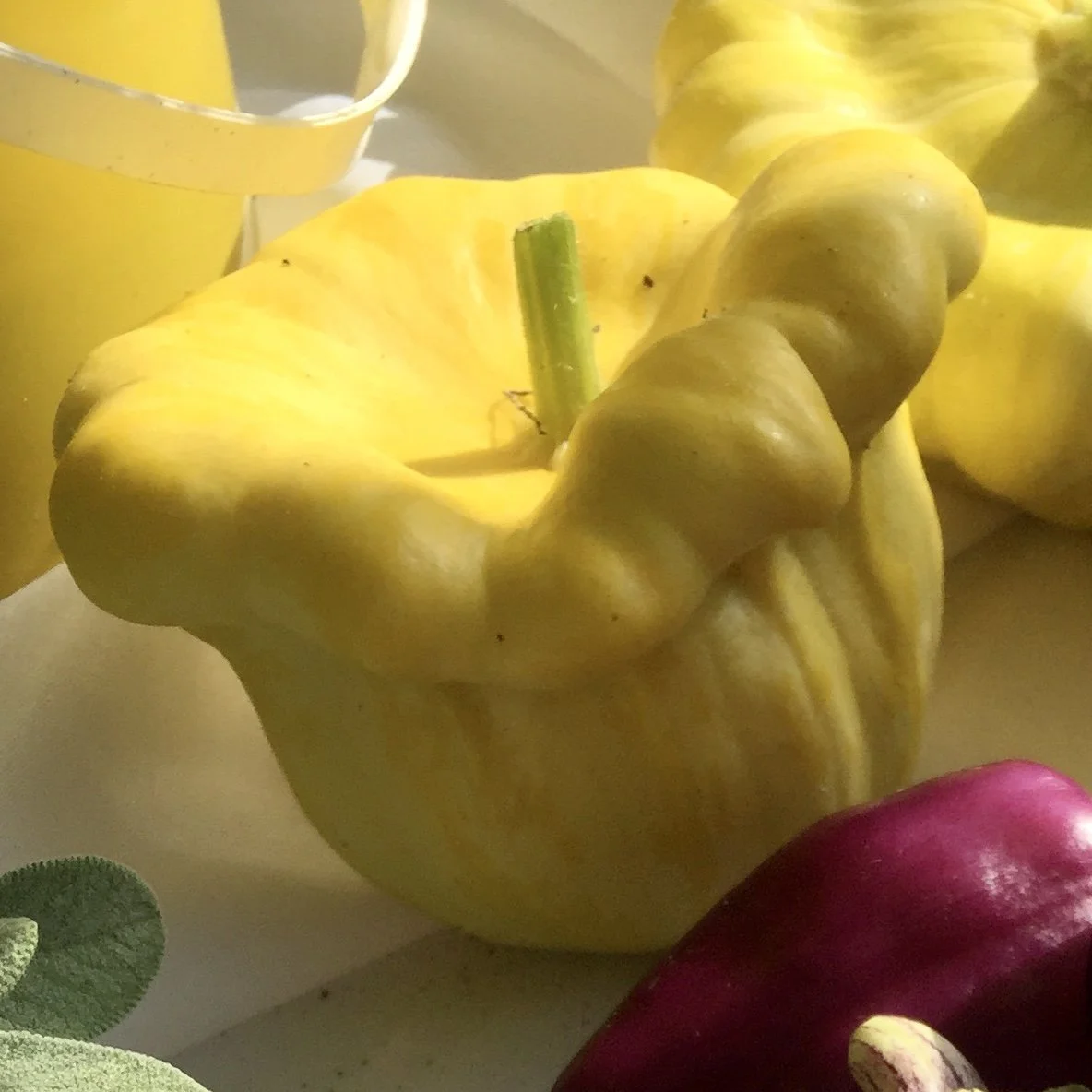Gelber Englischer
Gelber Englischer
GELBER ENGLISCHER SQUASH SEEDS
Cucurbita pepo
Gelber Englischer is possibly the most beautiful vegetable you've never grown.
This extraordinary old squash is worth growing purely for the sake of art, but you hardly need an excuse because these beauties are delicious. An abundance of unusual fruits are produced on compact bush plants. Perfect for small gardens, this variety is also suitable for a large container. Plants have produced for me in cold wet soils and endured slug damage without batting an eyelash. Early, producing in as little as 60 days from sowing outdoors. Highly recommended for cool summer climates.
Fruits may be left on the vine to mature into gorgeous autumnal decorations. Flavor of mature squash is good, but they are probably best kept for display purposes. Grow Pennsylvania Dutch Crookneck or Marina di Chioggia for delicious winter keepers.
Start indoors in 3" pots about 4 weeks before the last frost, sowing 3 seeds per pot, 1/2" below surface of moist soil; press to keep seed snug and mist with warm water; cover with plastic to maintain moisture and temperature; kept warm (75-80F) and moist in bright light, seeds will usually germinate within a few days. Prick out seedlings to grow on in individual containers, or merely thin to one or two plants per pot. Grow on in bright light at room temperature and harden off before planting outdoors after the last frost in full sun and well-amended soil. Soil temperature should be at least 65F. Space seedlings 2’ apart.
Fertilize seedlings with dilute seaweed extract when transplanting. Mulch seedlings with compost, mixed with bat or seabird guano if you have it, and then with comfrey leaves, grass or straw, to within a few inches of the stem to stop soil splashing onto plants. Marigold clippings may help deter squash bugs. Broadcast horticultural grit around seedlings if you have slugs. If you have squash vine borers, consider wrapping the stem with aluminum foil or florists tape. Keep seedlings watered and fertilize weekly. Keep squash picked to encourage continued production. Whole young squash are excellent grilled or breaded and fried. Slightly larger squash may be hollowed out, stuffed and roasted. Mature squash should be cured in the field and displayed wherever you wish to impress guests.
Packet contains at least 30 seeds.
